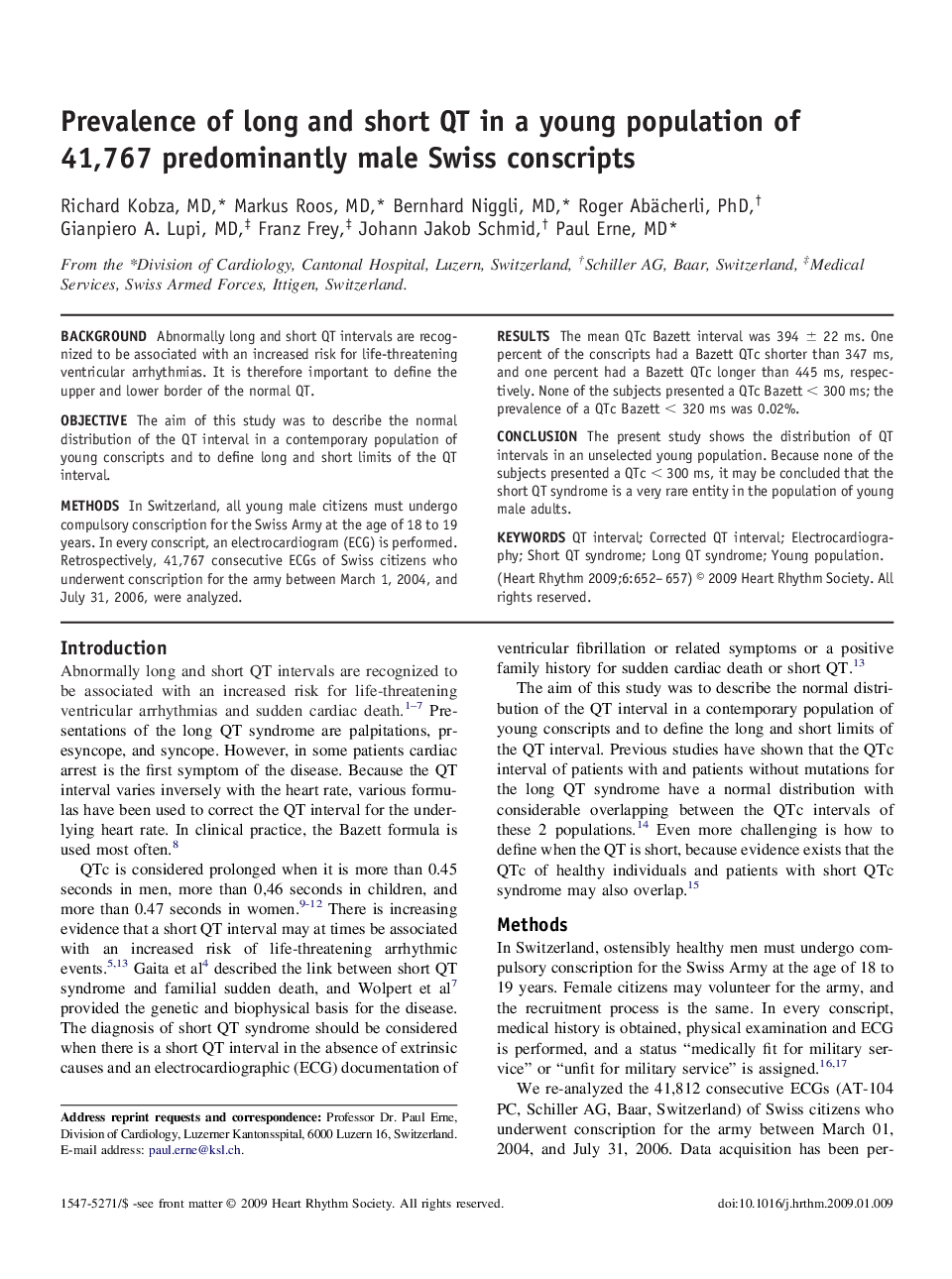| Article ID | Journal | Published Year | Pages | File Type |
|---|---|---|---|---|
| 2923647 | Heart Rhythm | 2009 | 6 Pages |
BackgroundAbnormally long and short QT intervals are recognized to be associated with an increased risk for life-threatening ventricular arrhythmias. It is therefore important to define the upper and lower border of the normal QT.ObjectiveThe aim of this study was to describe the normal distribution of the QT interval in a contemporary population of young conscripts and to define long and short limits of the QT interval.MethodsIn Switzerland, all young male citizens must undergo compulsory conscription for the Swiss Army at the age of 18 to 19 years. In every conscript, an electrocardiogram (ECG) is performed. Retrospectively, 41,767 consecutive ECGs of Swiss citizens who underwent conscription for the army between March 1, 2004, and July 31, 2006, were analyzed.ResultsThe mean QTc Bazett interval was 394 ± 22 ms. One percent of the conscripts had a Bazett QTc shorter than 347 ms, and one percent had a Bazett QTc longer than 445 ms, respectively. None of the subjects presented a QTc Bazett < 300 ms; the prevalence of a QTc Bazett < 320 ms was 0.02%.ConclusionThe present study shows the distribution of QT intervals in an unselected young population. Because none of the subjects presented a QTc < 300 ms, it may be concluded that the short QT syndrome is a very rare entity in the population of young male adults.
